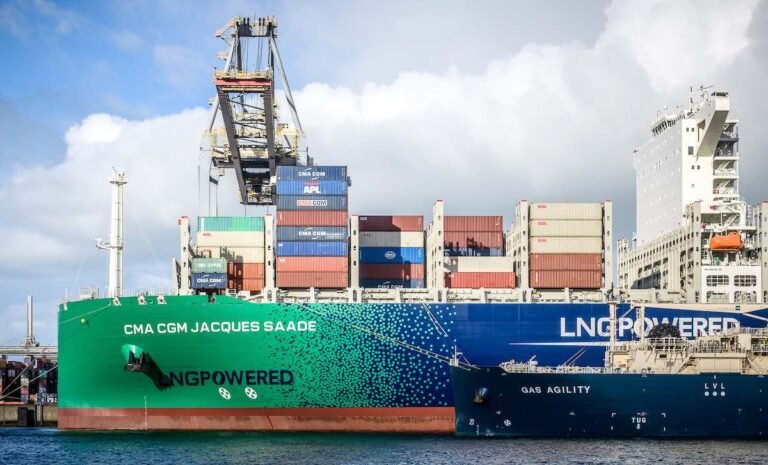French Liner CMA CGM Invests in Vanguard Renewables for Renewable Natural Gas
French liner giant CMA CGM is making a strategic minority investment in US-based Vanguard Renewables through its energy fund PULSE, securing long-term access to volumes of renewable natural gas (RNG). Vanguard, which runs anaerobic digesters powered by farm and organic waste, will dedicate up to four projects to produce biomethane, or bio-LNG for the Marseille-headquartered carrier.
The move comes amid the International Maritime Organization’s recent net-zero framework, which requires shipping companies to lower greenhouse gas emissions or face penalties.
Vanguard Renewables works with food and beverage manufacturers and retailers to divert organic waste from landfills and convert it into RNG. The company is a portfolio company of Global Infrastructure Partners (GIP), part of BlackRock.
Michael O’Laughlin, CEO, said: “We see this pioneering collaboration as a key step in supporting the maritime sector as the global industry takes a bold step toward improving emissions.”
CMA CGM’s interest in biomethane goes back several years. The company co-invested with ENGIE in the Salamander biomethane project in Le Havre, targeting industrial-scale production of up to 200,000 tonnes of renewable gas annually by 2028.
It also signed a deal with SUEZ to secure up to 100,000 tonnes of biomethane per year by 2030, backed by an initial €100m investment to develop production sites in Europe.
On the technological front, CMA CGM has taken a stake in Hycamite, a Finnish clean-tech company developing methane-splitting technology that turns methane into low-carbon hydrogen and solid carbon products.
In parallel, CMA CGM formed a 50/50 joint venture with TotalEnergies to launch an LNG bunkering service in Rotterdam. The plan includes commissioning a 20,000 cu m LNG bunker vessel by 2028 and securing up to 360,000 tonnes of LNG annually until 2040.
The moves sit within CMA CGM’s broader decarbonisation strategy, which has seen over 100 low-carbon newbuilds ordered, including dual-fuel LNG and bioLNG-ready ships joining the fleet in the coming years.

